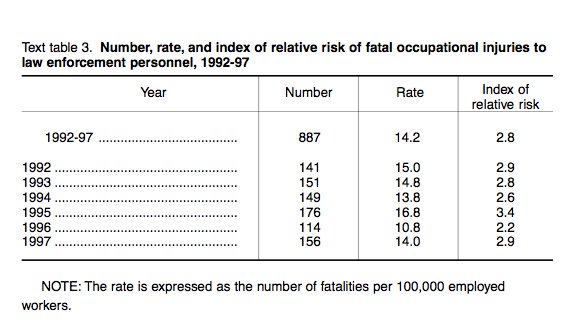The US Bureau of Labor Statistics (BLS) uses fatality rates to compare the risk of incurring a fatal injury among worker groups. Fatality rates are expressed as the number of fatal work injuries per 100,000 workers. The fatality rate of a particular group can be compared to the national workplace fatality rate for all workers using the ratio of the occupational to natonal fatality rates, called the index of relative risk.
A 1999 BLS study of police and firefighter fatality risks found that during 1992-1997 the average fatality rate for law enforcement was about 14 fatalities per 100,000 workers. The national fatality rate during that period was nearly 5 fatalities per 100,000 workers. So, as shown in the table below, the index of relative risk for law enforcement was nearly three times the risk for the average worker (1995 was higher because 14 police workers were killed in the Oklahoma City bombing).

Source:Fatalities to Law Enforcement Officers and Firefighters, 1992-97 (PDF), US Bureau of Labor Statistics


